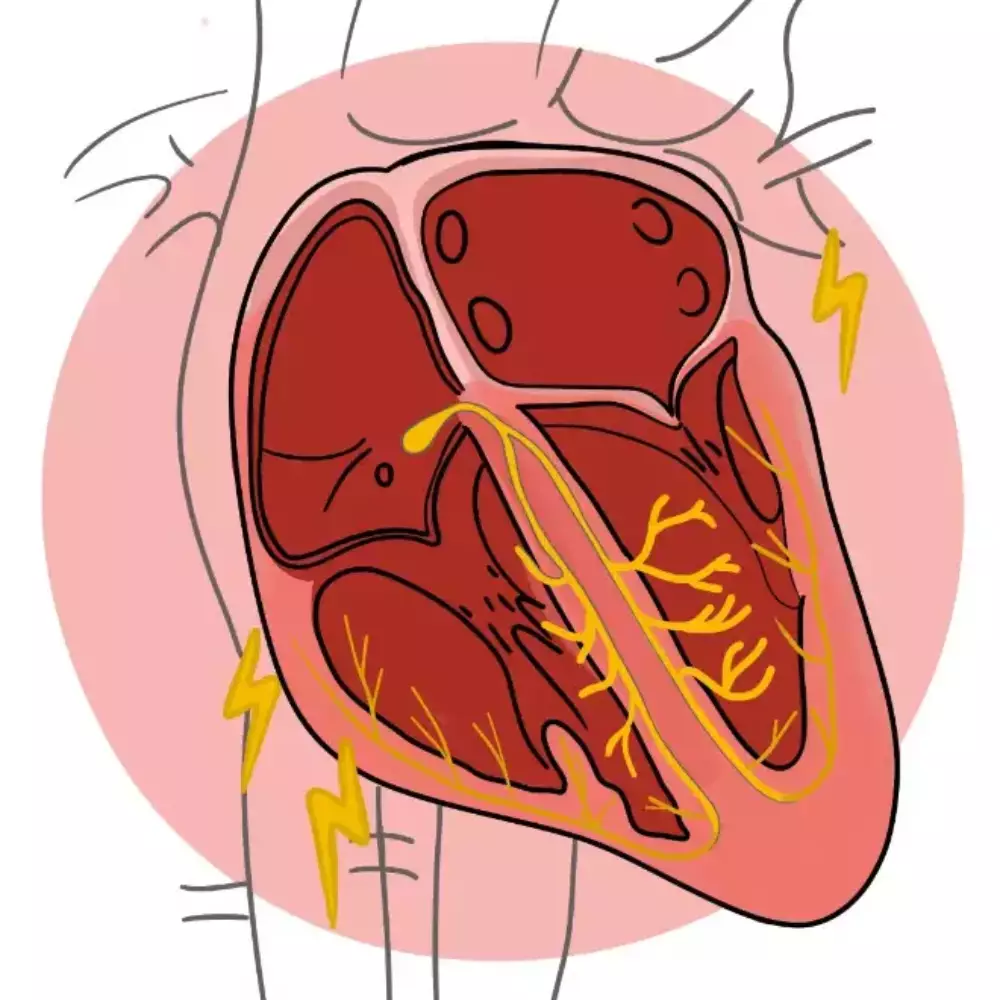Long QT syndrome
The Long QT syndrome is a heterogeneous group of conduction disorders characterized by prolongation of the plateau phase or repolarization phase of the action potential of cardiomyocytes, increasing the risk of developing severe polymorphic ventricular tachycardia called Torsades de pointes (TdP) with the possibility of progressing to ventricular fibrillation. According to etiology, these disorders can be divided into two groups – congenital LQTS and acquired LQTS. In our algorithm, we focus on acquired LQTS, which is more common and significantly more important for clinical practice, but its significance is often underestimated in practice. In this case, it is most commonly caused by ion imbalances and pharmacotherapy, thus we will focus on the most significant drug classes capable to prolong the QT interval, other risk factors for the development of this syndrome, and also on the acute management of already occurring arrhythmia.
Review
The algorithm for treatment of a patient with prolonged QTc interval summarizes the most important and frequent causes of this dangerous condition, which is relatively often encountered by doctors in intensive care units, emergency departments, and emergency medical services. It reminds of the correct way to measure the QTc interval and also the most common medications that lead to its prolongation. The algorithm provides a clear summary and particularly emphasizes treatment, which is entirely different from the treatment of other life-threatening arrhythmias.
Sources
ŠEVČÍK, Pavel; MATĚJOVIČ Martin, ed. Intenzivní medicína. 3. ed. Prague: Galén, 2014. ISBN 978-80-7492-066-0.
RITTER, James; FLOWER, R.J. et al. Rang and Dale's pharmacology. 9. ed. Edinburgh: Elsevier, 2020. ISBN 978-0-7020-7448-6
DREW, B.J. et al. Prevention of torsade de pointes in hospital settings, AHA Journals [online]. 08.02.2010 [accessed 2023-10-17]. From https://doi.org/10.1161/CIRCULATIONAHA.109.192704
OROZCO, Benjamin S. et al. QT prolongation, torsades des pointes, and cardiac arrest after 4 mg of IV ondansetron, The American Journal of Emergency Medicine [online]. 05.04.2023 [accessed 2023-10-17]. From: https://www.sciencedirect.com/science/article/pii/S0735675723001882?via%3Dihub
TITELBAUM, Nicholas et al. QTc: So many formulae, but which one to use? American College of Emergency Physicians. [online]. 11.02.2021 [accessed 2023-10-17]. From: https://www.acep.org/toxicology/newsroom/feb2021/qtc-so-many-formulae-but-which-one-to-use
Learning targets
2. Student is able to assess the risk of LQT in context of medical care.
3. Student is familiar with diagnostic criteria of LQTS (ECG, measurement, calculation)
4. Student is able to choose the correct medication to treat Torsade de pointes.
Key points
2. The first line treatment of Torsades de pointes is IV magnesium and not amiodarone.
3. The risk of LQT is significantly increased by hypokalemia, hypomagnesemia, age over 68 years, history of heart disease
4. QT interval needs to be assessed in context of heart rate - QTc
Related algorithms
External links
Database of QT prolonging drugs (registration is needed, but the database is free of charge): https://crediblemeds.org/
Tisdale score: https://www.mdcalc.com/calc/10293/tisdale-risk-score-qt-prolongation





